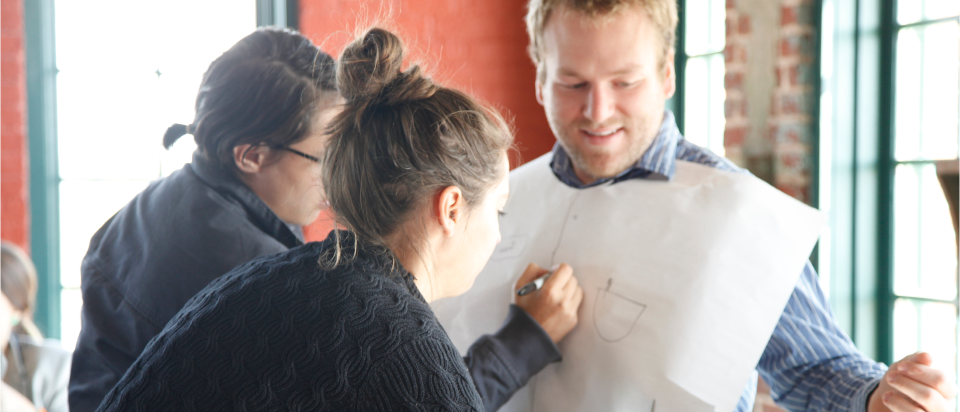For Baltimore’s first Design for America workshop, we partnered with the Baltimore VA Medical Center to create unexpected ways to improve medication compliance. We went through Design for America’s design thinking process in only two hours – from identifying the problem to a final pitch. The event took place at Humanim’s beautiful American Brewery building – a historic landmark that now houses employment programs and clinical support services to support Baltimore residents. Attendees included students, community partners, and working professionals.
Jenna Canzoniero, the VA’s Chief Resident in charge of Patient Safety and Quality Improvement walked us through the patient experience at the Baltimore VA Medical Center. She focused on doctor patient communications and artifacts used along the journey. Participants took notes as she shared stories and images of the process, quickly identifying opportunities for improvement along the path. The group quickly shared reactions and observations to Jenna’s presentation.
Just seeing the environment and hearing about the journey wasn’t enough to truly change the patient experience and ultimately improve patient medication compliance. Because the majority of patients at the Baltimore VA are 65 years old or older – and the majority of workshop participants were 30 years old or younger – we took cues from OpenIDEO’s aging empathy toolkit to more deeply understand with these patients’ unique needs.
Participants used what they learned through the aging empathy exercises to create more holistic empathy maps around a specific persona. They used all their senses to better understand the patient experience. This tool gave participants an opportunity to begin finding pain points and opportunities for improvement throughout the patient experience.
Each participant took a moment to reflect on moments that surprised them while “bodystorming” and building empathy maps. They looked for moments that were particularly frustrating – moments where design could make a big difference in the patient experience. After reflecting with post-its, they shared with their group and created a shared “How Can We…” statement to move forward with. Possibilities ranged from building strong support communities to creating affordable technology, from communication design to engineering.
To create unexpected ideas, participants began thinking with their hands. Using materials from markers to play-doh to recycled cardboard boxes, they quickly prototyped new products and experiences.

Vincent Purcell quickly becomes a physician
At the end of the workshop, teams were each given two minutes to pitch their concept to the room. The audience included fellow participants, as well as representatives and physicians from the Baltimore VA Medical Center, community mentors, and partners.
After the design-a-thon, MICA’s Master of Arts in Social Design students continued building concepts for another few weeks, working directly with Jenna Canzoniero and the Baltimore VA. The option remains open for any of these students to continue the relationship with the VA for their thesis work.
Role: Workshop Design, Facilitation